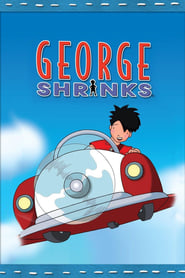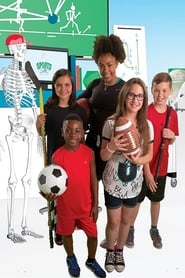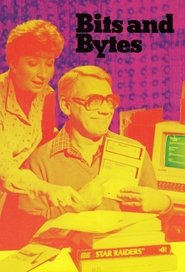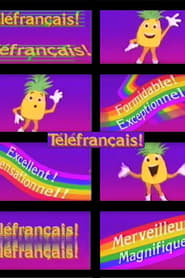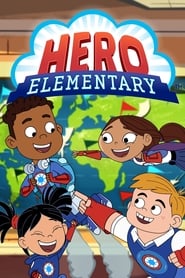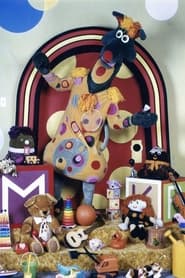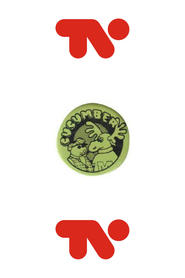Tvontario TV Series - Page 2
-
Talking Film
1978
Talking Film
1978
Movie expert Elwy Yost interviews industry people on both sides of the camera, encouraging them to talk about themselves, the state of their art, and its history. The series features many famous film personalities who, along with producers, directors, designers, screenwriters, and critics, offer candid insights into the making of motion pictures. -
George Shrinks
2000
star 6.5George Shrinks is a French-Canadian/American/Chinese animated television series. It is based on the children's book by William Joyce, produced in China by Jade Animation and in Canada by Nelvana, in association with Public Broadcasting Service. It tells the story of a ten-year-old boy named George who, one night dreams that he is three inches tall, only to wake up and discover that it is true. The show details his adventures with his friends and family going all through his adventures on his mini machine's that George and his musical father have created. -
Parlez-moi
0000
Parlez-moi
0000
Parlez-moi was an educational television series which was produced and broadcast by TVOntario from 1978 to 1980, with repeat broadcasts for several years afterwards. The host was Marc Favreau, who also played Sol the Clown. -
Inquiring Minds
1999
-
Sports Lab
2015
-
We Live Next Door
0000
We Live Next Door
0000
-
The Stationary Ark
1975
The Stationary Ark
1975
The Stationary Ark was a documentary television miniseries hosted by zoologist Gerald Durrell on location at his Jersey Zoological Park in the United Kingdom. It was based on his 1976 book of the same name. The series was produced by Canadian company Nielsen-Ferns and aired from September to December 1975 on CBC Television and TVOntario. Ark on the Move, a follow-up TV series, was also hosted by Gerald Durrell. -
Bits and Bytes
1983
Bits and Bytes
1983
Bits and Bytes was the name for two Canadian television series, starring Billy Van, who teaches people the basics of how to use a computer. The first series debuted in 1983 and the second series, called Bits and Bytes 2, in 1991. The first series also included popular comedian Luba Goy as the instructor to Van. The intro sequence featured a montage of common computer terms such as "ERROR", "LOGO" and "ROM", as well as various snippets of simple computer graphics and video effects, accompanied by a theme song that very heavily borrows from the 1978 song Neon Lights by Kraftwerk. The series were produced by TVOntario. The Writer-Producers of Both Bits and Bytes and Bits and Bytes 2 were Denise Boiteau & David Stansfield. The original series featured an unusual presentation format whereby Luba Goy as the instructor would address Billy Van through a remote video link. The video link would appear to Luba who was seated in an office on a projection screen in front of her. She was then able to direct Billy who appeared -
Join In!
1989
Join In!
1989
Every program had a number of elements woven into the plot line that invited its audience to "Join In!"; in games, songs, puzzles, or stories. The cast also broke the fourth wall, talking to the camera, and thus the audience, as if they were right there on set. The songs broke away from the usual children's format, offering a wide variety of rhythm and styles. The cast also sang live on each show. -
Spirit Bay
1984
-
Téléfrançais
1984
Téléfrançais
1984
Téléfrançais was a French language children's television show, produced by TVOntario from 1984 until 1986. The series of 30 ten-minute episodes has become a popular teaching tool, and is used by many educators to teach French as a second language to elementary and middle school children. The show's name is a portmanteau for télévision and français. The show follows the adventures of two children named Jacques and Sophie, and Ananas, a talking pineapple who resides in a junkyard. Other recurring characters are Pilote, Ginette, the Annonceur, Monsieur Pourquoi, Louis Questionneur, Brigitte Banane, and the comic skeletal musical group Les Squelettes. The programs were produced by Jennifer Harvey and directed by David Moore. The catchy theme and all of Les Squelettes' songs were written by the team of Bruce Ley and Jed MacKay. All the characters and scripts were created by Ken Sobol. -
Zardip's Search for Healthy Wellness
0000
Zardip's Search for Healthy Wellness was an educational Canadian television show from the 1980s intended to teach public health messages to schoolchildren. Zardip Pacific, played by Keram Malicki-Sánchez, is an alien from a planet whose inhabitants are becoming sick as they do not know how to live a healthy lifestyle. He takes the form of a boy and ventures to Earth to report the habits of humans to his home planet. He befriends a group of teenagers, who instruct their new and ignorant friend on topics ranging from nutrition to exercise, all the while unaware of Zardip's true identity. The show has a cult following among Canadians who attended grade school in the late 1980s and early 1990s, due to memories of watching the videocassettes in class, or watching the shows as they aired on TVOntario. -
Doki
2015
star 7.5Doki's a dog with a lot of questions about science and nature, and he and his explorer friends travel the globe and beyond to get the answers. -
The Undefended Border
2002
Explores the furious post-9/11 pace of immigration police work in Canada, revealing individual investigators staggering in the blur of competing urgencies. The series pulls back the layers of bureaucracy to reveal the priorities and the police work behind individual cases involving illegals, following their progress through investigation, detention, and deportation. -
Hero Elementary
2020
star 5Members of the Sparks' Crew -- Lucita Sky, AJ Gadgets, Sara Snap and Benny Bubbles -- work with their teacher, Mr. Sparks, to help people and solve problems. -
The Polar Sea
2014
star 6The Polar Sea is a 10 part television series that follows an incredible amateur expedition through the fabled Northwest Passage during a summer of revolutionary change in the Arctic. -
The Science Alliance
0000
The Science Alliance
0000
The Science Alliance was an educational television show which was produced and broadcast by TVOntario in 1981-82. The hosts were Rex Hagon and Judy Haladay. The typical episode would feature the hosts demonstrating various aspect of the subject of the episode. In addition, a largely unseen narrator named Bryant would interrupt at pertinent points with a vignette called "Bryant's Giants of Science" which would tell the story of a figure in the history of science and their contribution to scientific knowledge. -
Wolf Joe
2021
Wolf Joe
2021
Wolf Joe follows Joe, a young indigenous boy who is inspired to explore his indigenous culture and identity as he and his two best friends embark on fun filled adventures to help their community. -
Polka Dot Door
1971
Polka Dot Door
1971
Polka Dot Door was a long-running Canadian children's television series produced by the Ontario Education Communications Authority from 1971–1993. PDD was created and developed by a team of employees from TVOntario hired and led by original series producer-director, Peggy Liptrott. Significant contributors to the creation and development of the series in 1971 included Executive Producer Dr. Vera Good who laid the conceptual foundation of the show, Educational Supervisor, Marnie Patrick Roberts, Educational Consultant L. Ted Coneybeare, Script Writers/Composers, Pat Patterson and Dodi Robb, Animator Dick Derhodge and Dr. Ada Scherman, a professor at the prestigious Institute of Child Study in Toronto who was consulted in the early stages of PDD's development and is responsible for giving the show its name. -
Cucumber
1974
Cucumber
1974
Children's Underground Club of United Moose and Beaver for Enthusiastic Reporters or Cucumber, was a TV show produced by TVOntario in the 1970s, and repeated in the 1980s during TVOntario's daytime kids' programming. The show featured a human-sized moose and beaver often reporting from a treehouse. By sending in a story or some artwork to the show, one could become a member of the Cucumber Club. Some notable people appeared on the show: ⁕A young John Candy guest starred as a character named Weatherman ⁕A young Martin Short guest starred as a character named Smokey the Hare ⁕An interview featured a nine-year-old Jeff Healey.

